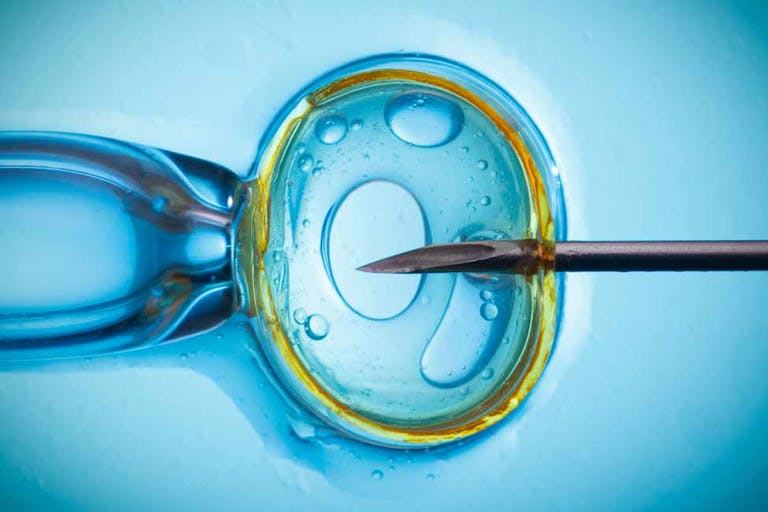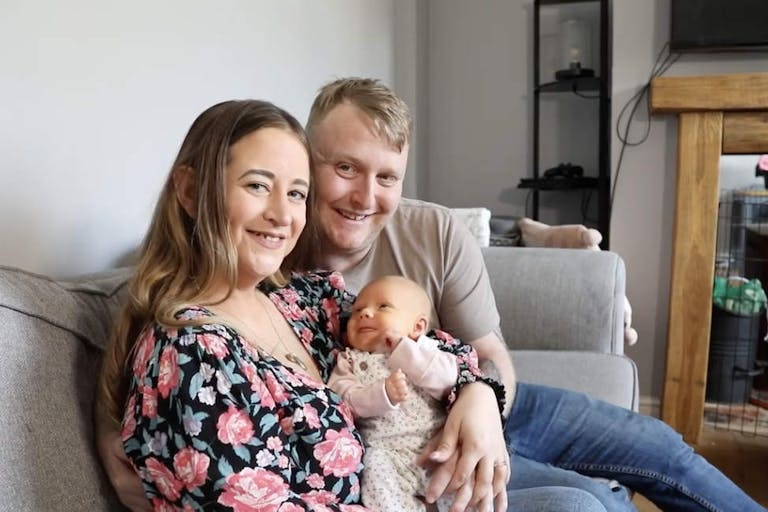
Abu Dhabi expands fertility industry to become 'IVF capital of the world'
Angeline Tan
·
Guest Column·By Right to Life UK
Couple who met as premature babies in hospital celebrate birth of baby girl
(Right to Life UK) A couple who first met as premature babies in a neonatal unit in the same hospital are now engaged and have had a baby daughter who was born in the same hospital as they were.
In 1994, both Jack Richardson and Bronwyn Tacey were born prematurely at Queen’s Medical Centre in Nottingham. Jack was born at 30 weeks and Bronwyn at just 26 weeks.
Their families became friends while the two babies were being cared for in the neonatal intensive care unit.
“I was in hospital for fourteen weeks before I came home”, Bronwyn said. “Jack was in intensive care. He was in there for a year with numerous hospital appointments”.
“It was touch and go whether we would both make it. It’s a complete miracle that we are both here”.
Once out of hospital, Jack and Bronwyn grew up together, but drifted apart over the years as they went to different schools and led different lives. However, later in life they connected again over social media and began dating.
“I always knew there was something – but I didn’t think we would make anything of it”, Bronwyn said.
“The first person he met”
Less than two years after reconnecting, the couple announced their engagement, and just a month later found out they were expecting a baby themselves.
“It was just amazing,” said Jack’s mother, Sharon. “The first person he met is the person he’s got a baby with.”
Baby Sienna was also born in Queen’s Medical Centre, the same hospital where Jack and Bronwyn first met as babies.
Bronwyn admitted that it is “strange” to explain how the couple first met, saying “I don’t know anyone else or any other relationships that are like this”.
Article continues below
Dear Reader,
In 2026, Live Action is heading straight where the battle is fiercest: college campuses.
We have a bold initiative to establish 100 Live Action campus chapters within the next year, and your partnership will make it a success!
Your support today will help train and equip young leaders, bring Live Action’s educational content into academic environments, host on-campus events and debates, and empower students to challenge the pro-abortion status quo with truth and compassion.
Invest in pro-life grassroots outreach and cultural formation with your DOUBLED year-end gift!
She went on, “It’s a great partnership. “We’re like best friends as well as partners. It’s the best of both worlds”.
“It just feels really natural to be together”.
Over 30 years since the time limit for abortion was last updated
Medical care for premature babies has improved considerably since Jack and Bronwyn were born prematurely in 1994. The time limit of 24 weeks for abortions performed under section 1(1)(a) of the Abortion Act 1967, was introduced by section 37 of the Human Fertilisation and Embryology Act 1990.
Prior to this change, the abortion limit had, de facto, been 28 weeks gestation set by the Infant Life (Preservation) Act 1929, which made it illegal to “destroy the life of a child capable of being born alive”.
The introduction of a 24-week gestational limit in 1990 was significantly motivated by the results of a Royal College of Obstetricians and Gynaecologists (RCOG) working party report on neonatal survival rates, which noted improvements in survival rates before 28 weeks of gestation.
During the debates ahead of the Human Fertilisation and Embryology Act 1990 becoming law, MPs referred to medical advances that had led to improved neonatal survival rates before 28 weeks gestation and the need for a reduction from 28 weeks.
Similarly, when the question of abortion time limits was revisited in 2008, the lowering of the abortion time limit in 1990 was again linked to the increased survival rates for babies born before 28 weeks gestation.
Spokesperson for Right To Life UK, Catherine Robinson, said “Congratulations to Jack and Bronwyn on the birth of their baby girl! This truly remarkable story highlights the amazing work of medical staff and the importance of scientific advancements in neonatal medicine. Without these, not only might Bronwyn and Jack not have survived to adulthood, but baby Sienna would not be here today either”.
Editor’s Note: This article was published at Right to Life UK and is reprinted here with permission.
Live Action News is pro-life news and commentary from a pro-life perspective.
Contact editor@liveaction.org for questions, corrections, or if you are seeking permission to reprint any Live Action News content.
Guest Articles: To submit a guest article to Live Action News, email editor@liveaction.org with an attached Word document of 800-1000 words. Please also attach any photos relevant to your submission if applicable. If your submission is accepted for publication, you will be notified within three weeks. Guest articles are not compensated (see our Open License Agreement). Thank you for your interest in Live Action News!

Angeline Tan
·
Guest Column
Stefano Gennarini, J.D.
·
Guest Column
Right to Life UK
·
Guest Column
Mark Lee Dickson
·
Guest Column
Mark Lee Dickson
·
Guest Column
Dave Andrusko
·
Guest Column
Right to Life UK
·
Guest Column
Right to Life UK
·
Guest Column
Right to Life UK
·
Guest Column
Right to Life UK
·
Politics
Right to Life UK
·